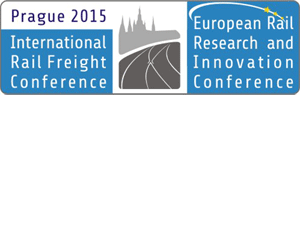Eurasian Development Bank: Rail Market Development Prospects in the Single Economic Space

Eurasian Development Bank (EDB) prepared the report Rail Market Development Prospects in the Single Economic Space. The report reviews the rail freight and passenger transportation market, structural reforms in the sector and the influence of integration processes on its prospects, as well as various types of competition and the freight car market.
The report states that structural reforms in the area of rail transportation in the SES are being implemented at different paces. Kazakhstan is developing in the most dynamic fashion: freight traffic is growing and the market comprises not only rolling stock operators, but independent locomotive operators as well. The Russian operator market is developing more successfully in the area of freight transportation, while passenger transportation is at the starting point of reform. The Belorussian model of rail transport is significantly different: at the moment, the sector is being modernised under a state programme.
The report also reviews competition between passenger and freight operators and between infrastructures, which includes competition between rail routes and road corridors for freight and passenger traffic. Attracting and servicing additional freight transported between the EU countries and East Asia, primarily China, is the key objective in developing the sector in the three SES countries. If to proceed from the priorities of many countries, which are to attract additional freight to their transport systems, competition between rail routes is, in essence, a struggle for freight transit.
The authors of the report state that the rail sector prospects depend, to a significant extent, on the coordination of transport policies in the framework of the Eurasian Economic Union. The establishment of a common market in transport and logistics services and a common transport space, the deepening of integration and the improvement of the quality of the services provided, as well as the coordinated development of international rail routes are among the tasks that need to be solved to ensure the advancement of the sector and the use of its transit potential.
Railway Infrastructure Data
| Single Economic Space (SES) | 2000 | 2007 | 2010 | 2013 |
|---|---|---|---|---|
| Belarus – railway lines (in operation, km) | 5494 | 5494 | 5511 | 5462 |
| - out of which electrified | 888 | 888 | 898 | 899 |
| Kazakhstan -railway lines (in operation, km) | 13521 | 14205 | 15079 | 14759 |
| - out of which electrified | 3724 | 4144 | 4144 | 4170 |
| Russian Federation - railway lines (in operation, km) | 86075 | 85155 | 85556 | 85248 |
| - out of which electrified | 41115 | 42911 | 44015 | 43306 |
| Total SES - railway lines (in operation, km) | 105090 | 104854 | 106146 | 105469 |
| - out of which electrified | 45727 | 47943 | 49057 | 48375 |
In early 2013, the average railway density per 1000 sq km in SES was 5.3km ( in Belarus – 26.3km, in Kazakhstan – 5.4 km and in the Russian Federation – 5 km). For comparison in the USA the railway density per 1000 sq km is 23.34 km, in China is 9.48 km and in several European countries (Belgium, Germany, Czech Republic, Switzerland) more than 100 km.
Rail Freight (bn tkm)
| Countries | 2007 | 2008 | 2009 | 2010 | 2011 | 2012 | 2013 |
|---|---|---|---|---|---|---|---|
| Belarus | 47.9 | 42.7 | 49 | 46.2 | 49.4 | 48.4 | 43.8 |
| Kazakhstan | 200.8 | 214.9 | 197.5 | 213.2 | 223.6 | 235.9 | 229.1 |
| Russian Federation | 2090 | 2116 | 1865 | 2011 | 2128 | 2222 | 2195.8 |
| Total SES | 2338.7 | 2379.9 | 2105.2 | 2270.4 | 2401 | 2506.3 | 2468.7 |
Over the last six years, railway freight within the EEA has increased by 5.5%. However all three countries experienced a decrease in rail freight transport in 2013, due to economic factors and a decrease in the industrial production of Russia in 2013 – 2014.








There are no comments at the moment, do you want to add one?
Write a comment